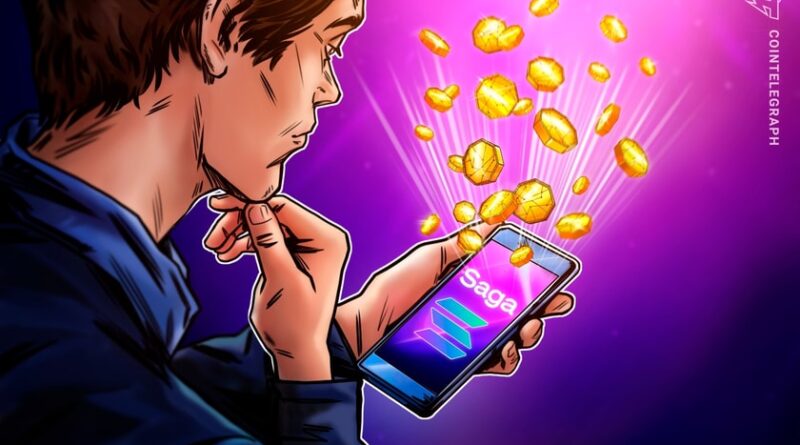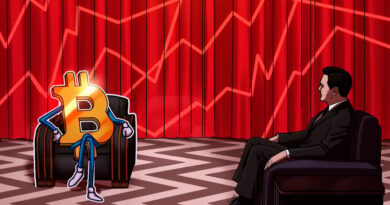How to use Solana Saga to buy and sell crypto
The first mobile by a blockchain company, the Solana Saga was launched in April 2023. Can users benefit by using Saga for crypto transactions?
Solana Saga, the Web3 mobile phone
Solana launched its Web3 mobile phone, the first of its kind, in April 2023. The phone packs all the usual functionalities users have come to expect from a smartphone and tops it up with a Web3 experience. It includes a decentralized application (DApp) store and seamless integration across crypto wallets and DApps. Saga has been tagged as the phone “that keeps on giving.”
The phone has been on pre-order for several months, and those who pre-ordered enjoyed airdrops like the “Saga Pass.” Holders of the Saga Pass also received several art airdrops in the form of nonfungible tokens (NFTs) leading up to the April launch. On April 13, 2023, Anatoly Yakovenko, co-founder of Solana, went on stage to announce the launch of the phone and its features.
First reactions
The phone arrived a few weeks late for European users due to supply chain challenges. Even when American users started receiving their phones in April, it took May for those across the Atlantic to get theirs.

The phone has a good form factor that is not too different from an iPhone. The green buttons, ceramic backing and stainless steel frame make it feel like a mainstream phone. The phone runs on Android OS and is manufactured by OSOM, which presented it alongside the Solana co-founder at the launch event.
The phone packs a bunch of hardware elements. It has a 6.67-inch, 1080p resolution AMOLED screen and a 120Hz display. The processor used is the Qualcomm Snapdragon 8+ Gen1 with 12 gigabytes of RAM. The phone also comes with 512GB of storage, which is not very common with smartphones. The phone lasts longer than a typical iPhone 14 Pro with a 4,110-mAh battery.
There is also a fingerprint sensor on the back of the phone, which feels ergonomically intuitive for users. The camera takes good pictures, although an objective analysis of how it compares with an iPhone or Samsung camera is beyond the scope of this article. The sound quality of the in-built speakers could be better.
Setting up and software
The phone setup is pretty quick. The setup process includes creating a Solana wallet and a seed vault where the seed phrase is stored. Users can then rely on their fingerprints (biometrics) to unlock their wallets and sign transactions. The seed vault is a fundamental feature that sets it up for the Web3 experience.
The phone works like any other Android phone, and therefore, the basic setup is not any different from that of a normal Android phone.

But it also comes with a Solana-powered DApp store. The app store provides us access to a number of DApps on the Solana network across games, NFTs, decentralized finance (DeFi) and social categories. When the phone was launched, there were no more than a dozen apps. But through April and May 2023, more apps have been shipped, and the app store now has over 25 apps.

The setup of the Phantom wallet, which is commonly used on the Solana network, is quite seamless and simple. However, some users have had trouble downloading other applications onto the phone. Through April and May 2023, the DApp store had a few updates, which seem to have fixed these issues.
Some Saga experiences
The Saga brings the Solana user experience to life by providing exclusive access to several DApps. To start with, Saga users receive a genesis token, which helps the Solana DApps ecosystem identify loyal users and reward them over time.

On the practical side, transactions using the Phantom wallet to swap USD Coin (USDC) for Solana (SOL) were quite seamless using the fingerprint sensor. For once, a crypto transaction feels like a fintech contactless payment — mechanical and mindless.
Other key applications worth mentioning are Dialect, a Web3 messaging app using NFT stickers. Solana’s compressed NFT technology makes minting an NFT extremely cost-efficient. The Dialect app also gamifies collections of NFT stickers that can be then used in messages.
The Mintify app connects to the user’s photos and allows minting them without a fuss. The app connects with the Phantom wallet to charge a fee in SOL (about 0.01 SOL per mint). Once the user approves the mint, it happens instantly, with pictures uploaded on-chain and an address provided immediately.
Some of the DApps that were largely web-based for all users have shown up on the Saga app store. Squads, a multisig wallet on Solana, is an example. They may have held back their mobile launch for the Saga release.
This may be a sign of things to come as Web3 apps show allegiance to their parent chain’s ecosystem infrastructure. However, that would also limit their distribution capabilities and restrict them to a limited user base.
Apart from these integrated and exclusive user experiences, the Solana Mobile team has also announced meaningful airdrops. For instance, Claynosaurz, one of the top NFT communities by market capitalization on Solana, is doing an airdrop for users who pre-ordered the phone.
Other Web3 apps work seamlessly, too. Saga relies on the Android ecosystem to support other Web3 applications. However, they do not offer the same integrated experience that Saga DApps can offer.
Can Solana Saga be improved?
The Saga costs $1,000 apiece, and that is a big ask from a liquidity-drained Web3 user at the depths of a bear market. It is generally the Solana-loyalists, liquidity-rich and Solana-curious who typically go for this innovation.
While the fingerprint sensor is useful and intuitive, it still is not the same as facial recognition, which is perhaps a more intuitive and instantaneous experience. Saga also doesn’t support e-Sims. For users who travel frequently and may need to use two or three mobile numbers on one phone, e-Sims are quite helpful.
The DApp store experience has received mixed feedback due to technical glitches. One of the key sectors that is expected to bring 1 billion users onboard to Web3 is gaming. The DApp store only has three games as of May 26, 2023. Despite all these glitches, it is a promising start to a much-needed development in the industry.
What lies ahead for the Solana Saga?
Will Saga beat the iPhone or Android anytime soon? Highly unlikely. This is an experiment to provide a specific user experience and its benefits to the converted (native Web3/Solana users). For others, it is just a glimpse into the future.
While some may call it sheer coincidence, Apple’s approval of Uniswap, Axie Infinity and in-app sales on StepN are all indicators that the Saga is influencing some of the macro trends in the industry.
The Apple tax of 30% is still a drain on creators’ revenue; however, that may be a future tweak that might come when Apple’s hands are forced. Until then, Saga users can be the guinea pigs for perhaps an underrated Web3 experiment.




